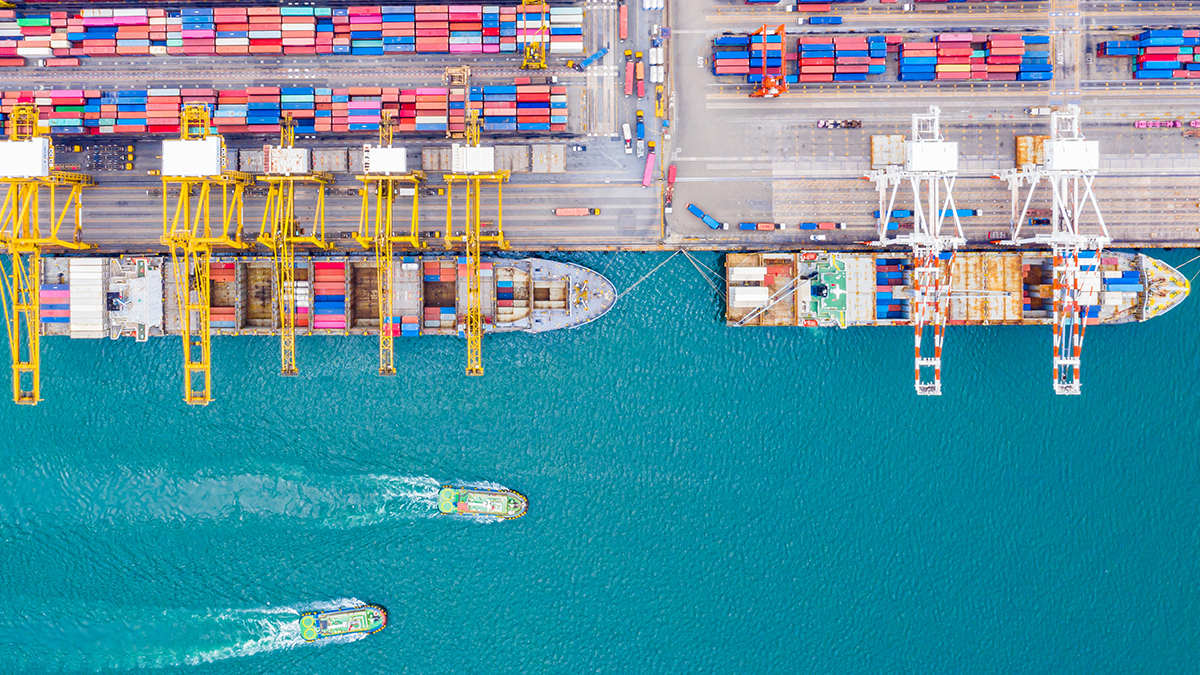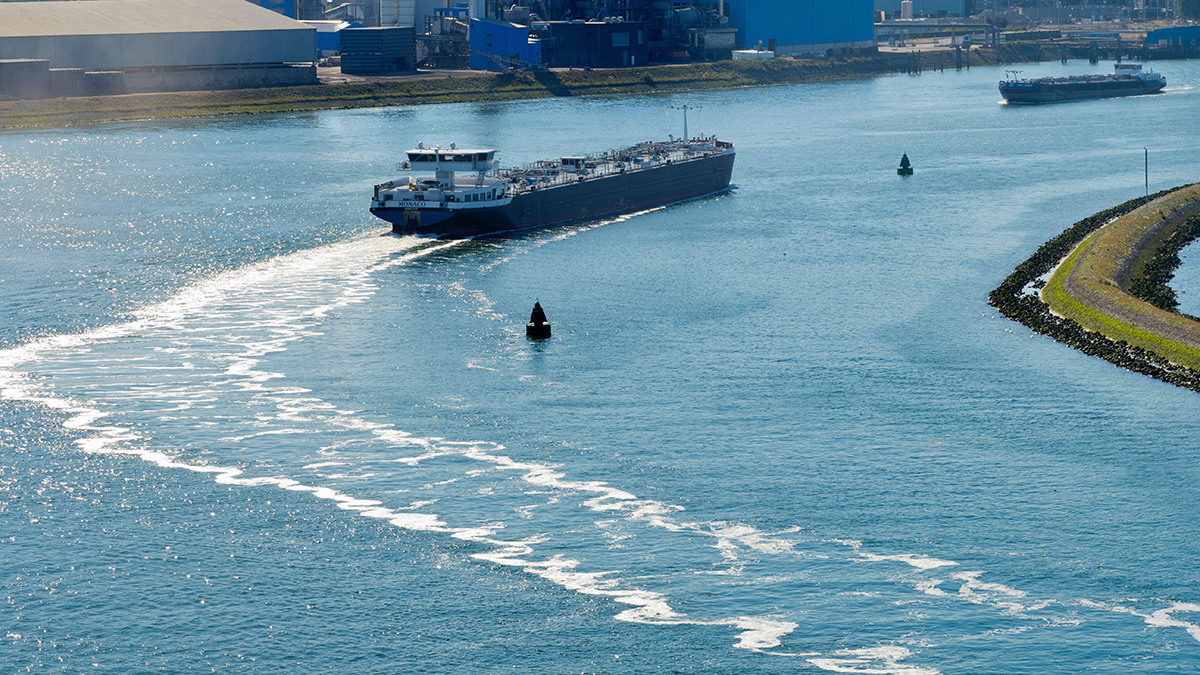Lloyd's remains watertight as marine market of choice: Gallagher's James
Only liability in ports and terminals can be described as a hard market at the moment, Andrew James says
Gallagher’s managing director of marine insurance, Andrew James, discusses new capacity into the sector, pricing trends and the impact of Ukraine war exclusions
Of the three most common types of marine re/insurance – hull, cargo and liability – only liability in ports and terminals can be described as a hard market at the moment, according to Andrew James, managing director of marine at Gallagher.
In an interview with Insurance Day, James, who manages the broker’s hull and non-protection and indemnity (P&I) liability business, says US demand is “far outpacing” the speed with which insurers can keep up with liability coverage.
“Not only is the general quantum far higher than we’ve ever seen before, we also now have what we call nuclear verdicts, which are becoming much more common. We’ve also seen reinsurance pressures over the past couple of years having a real impact on underlying carriers and so there’s been a reduction in capacity,” James says.
There has also been a “significant” impact on reinsurance programmes emanating from Russia-Ukraine-Belarus (RUB) war exclusions.
“Many marine treaties typically used to include things like terrorism in their composite programmes but, as a result of the Russia-Ukraine war, many of these programmes had to be placed on a monoline treaty basis, which significantly increased costs,” James says.
There is a trend, he continues, for reinsurance clients to try and unbundle their packages of cover.
He says: “So much was bundled into these treaties at one point that they’ve now had to separate it all out. If you look at the ports and terminals sector, which, on the whole, has performed reasonably well, you’ve got the natural catastrophe side of things, which has caused issues.
“Recent hurricanes, like Irma, have put significant pricing pressure on the non-marine market, which has had a significant effect on marine because, quite often, those big packages are layered with parts going into the marine market and with excess going into the non-marine market.”
In other words, each syndicate has a finite supply of capacity it is willing or able to deploy in a region, so when the pricing of one product line changes significantly, this has an impact on the other lines vying for that same capacity.
"Recent hurricanes, like Irma, have put significant pricing pressure on the non-marine market, which has had a significant effect on marine because, quite often, those big packages are layered with parts going into the marine market and with excess going into the non-marine market"
James says, on the liability side, the only company to have “dropped out” this year has been Liberty.
“I think that’s the first time a marine syndicate was pulled out of liability in isolation. Typically, if anyone exits liability, it’s because they’ve pulled out of a class, in this case marine, in full,” he says.
Markel has “significantly” pulled back on its liability offering and Aegis has exited US P&I, maritime employers’ liability and umbrella-related businesses.
Carriers that have performed well, according to James, are Munich Re, Tokio Marine, Houston Casualty, Atrium and Beazley. New market entrants that have also “done very well” are IQUW, Inigo and Convex, he adds.
“Those new players have been market changers in the marine liability sector, bringing fresh capacity and new teams that don’t have the legacy history some of the other carriers have.”
Opportunities on the liability side include the use of technology to streamline operations.
“There is a requirement for greater intelligence, both for underwriters and brokers, given the sanctions list and the dark fleet issues, and we all have to monitor trade much more carefully these days,” James says.
The outlook for the liability market is more stable than earlier this year, he continues.
“Underwriters will still continue to push for rate rise, but they are now differentiating between accounts,” he says.
The average rate rise will be about 7.5% until the end of this year, with slight deviations between jurisdictions. For example, a “heavy” US element to a policy would make coverage more expensive.
James says: “With ports and terminals, much of the wind-exposed accounts will have renewed by this point in the year and therefore we’re unlikely to see the rate rises we saw in the first three quarters because the rest of the account being renewed now will not be exposed to the wind. We’re estimating for non-catastrophe-exposed accounts, about a 7.5% rate rise, but that could be more for big natural catastrophe-exposed areas.”
As a result of nuclear verdicts in social inflation, there has been a “significant realisation” as to true exposure on the excess layer placements, James says.
Underwriters have had to significantly restructure their line sizes and then “ventilate” their involvement to try and maintain stability.
“The newer capacities, such as IQUW and Everest, have all become involved in the incumbent London business without the need to significantly upset the applecart,” he says.
The challenge is selling the rate rises to clients.
“In that liability market, we’re now feeling the fatigue of four or five years of rate rise and it’s getting the clients to understand the need for increased premiums,” James says.
War risks exclusions
Just as hull is not in a hard market, nor is P&I liability for war risks, according to James.
Markel, Vessel Protect, Navium and Convex “continue to lead the way” on war risks, he says, alongside established carriers like Beazley and Liberty. The only notable “absentee” has been Talbot, owing to challenges AIG has faced with its RUB exclusions.
“Although there have been big losses, underwriters have been charging some quite decent rates for vessels going in and out of the Black Sea. Moreover, there haven’t been the kind of big piracy losses that we had been seeing in West Africa and so that factor now is genuinely quite benign.”
RUB exclusions within reinsurance treaties have been an issue, however.
James says: “Most of the war risk underwriters who want to participate in that trade are writing net lines. To start with, I think we all in the industry panicked a bit to see if there would be appetite or capacity, but there has been, and some of those underwriters have been pretty successful in writing that business.”
The real issue with war exclusions has been a lack of consensus, he says.
“Two or three of the big reinsurers had some form of exclusionary language, but it wasn’t necessarily the same. If you’re an underwriter and you buy your reinsurance from several different carriers, you might have two or three different types of exclusion within your wordings,” James says.
He continues: “I know AIG in particular struggled with the RUB exclusions and, as a consequence, its Lloyd’s syndicate Talbot had to stop writing a lot of business out there.”
The problem AIG faced was many shipowners could not accept a clause against trading in the Black Sea because their long-term charterparty would not have exclusionary wording.
James says: “If the charter wants to legally go and pick up grain from Ukraine then the ship owner wouldn’t be able to stop them. Consequently, AIG had to come out of placing their business with Talbot.
“On the direct side, most players in that market are writing on a net line basis now anyway. Subject to there not being a breach of sanctions, they’re happy to continue providing cover for those trades,” he adds.
Hull is stable
In contrast to liability, James says the hull market is “quite stable”.
“There might be a few storm clouds gathering in the future but, as a rule of thumb, we’ve come out of the soft market cycle we’d had for more than 18 years and have had four years of rate rises. Now, hull underwriters, touch wood, are making some money.”
They are only two issues that could possibly “dampen the party” for hull underwriters, James says.
The first is inflation. “This is the great unknown, but 10% to 15% on loss ratios, once claims have developed, could well put the market back into a loss-making position.”
The second question is reinsurance. “A lot of the carriers had their reinsurance renewals on the first of January. Last year, on the back of some quite punitive terms, a lot more retention was taken by the underlying carriers. And then, on the back of the war losses, there were a lot of RUB exclusions, which focused minds as well,” James says.
Capacity follows rate rises and profitability, so there have been a lot of new entrants into the hull market over the past year, James says.
“There might be a few storm clouds gathering in the future but, as a rule of thumb, we’ve come out of the soft market cycle we’d had for more than 18 years and have had four years of rate rises. Now, hull underwriters, touch wood, are making some money”
“I don’t think that’s going to cause a soft market necessarily, because one would hope underwriters have long enough memories not to go down the path of big rate reductions. I think underwriters would find it hard to charge inflationary rises at the moment, however, but only because there is such capacity out there that fleets might move.”
The technology available to underwriters now is such that they can manage their portfolios more closely, meaning poorer-performing business is more visible, James stresses. That gives them the ability to be more sector-specific, by analysing different types of vessels and different trade trends.
“There’s a particular worry about large container vessels and that’s actually not necessarily to do with the performance of the ship itself, but with misdeclared cargo on board,” James says.
Car carriers are a particular concern. “There’s been some quite big losses in that market over the past few years and there’s a question mark above what the underlying cause of fire is. One of the big question marks is over electric vehicles. There’s no definitive proof but there is a suspicion they combust quite easily and they burn very hot, which is a real problem for that industry,” James says.
Specific targets
All hull market underwriters have generally performed “very well”, according to James.
“It was really a couple of years ago when we saw the real burn, when underwriters either had their wings clipped, or didn’t get their business plans approved, or significantly reduced their willingness to write hull. But I think most hull underwriters have performed very well this year,” he says.
Certain underwriters will target specific kinds of tonnage, he continues.
“We’ve seen Fortify and others come into hull as a new market for them, and they’re specifically going for a certain size and type of business, rather than writing just a marine hull portfolio. I think there will continue to be more underwriters coming in to focus on certain types of tonnage, which they believe will outperform the rest of the market.”
Have they been proved right about “outperformance”?
“It’s too early to say because they’ve only really been going a year, but they are doing quite well. If you do the analysis over the portfolio, there are definitely certain sectors that outperform others, but successful underwriters at Lloyds, those top-tier underwriters – the Ascots, the Chubbs, the Axa XLs – they will write a cross-section of business and they will do it successfully. So, one could argue, it’s about having the right underwriter in place and setting the right terms that makes the profitability.”
Lloyd’s position as the market of choice for marine is watertight, according to James. “The Lloyd’s market is still very strong and still a main player in the industry. We’re all enjoying the Underwriting Room now being back up and running, from both the broking and underwriting sides, and we really want to encourage people to use it,” he says.
“It’s very hard to put a number on it, but I would guess that, by not having face-to-face broking, premiums probably went up in certain sectors by 5%. Microsoft Teams is very good for certain things, but you can’t beat sitting in a box with an underwriter, thrashing out a deal. The other benefit of being face-to-face is training our youngsters.”
A sign that London is in good shape, he adds, is the number of large Scandinavian insurers, including Gard, the Norwegian Hull Club and the Swedish Club, that have all recently opened an office in the city.
James concludes: “So, London is probably still the most important marine market.”



